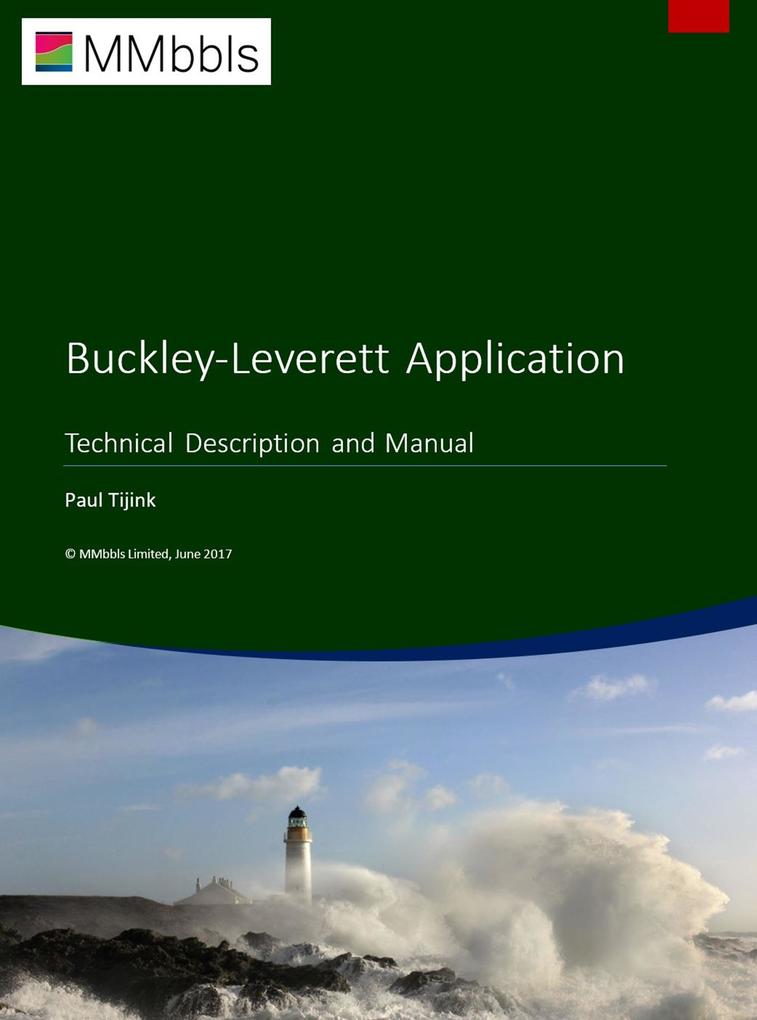
Sofort lieferbar (Download)
This book gives a detailed description of the concept of fractional flow, the Buckley-Leverett theory, the mathematical equations and extensions of the theory to practical application areas within subsurface reservoir management. The book is accompanied by a tool, which is available from mmbbls.com. The purpose of the book and the tool is to enable subsurface professionals to quickly compute the expected fractional flow behaviour over time of their mixed phase reservoirs. The basic Buckley-Leverett equation describes the one-dimensional, frontal displacement of incompressible, immiscible water and oil. In addition, Welge's method derives an expression for the position of the water front and the average water saturation value behind a propagating front. The derived equations can be used to obtain an estimate for the time of water breakthrough in a production well, an estimate of the sweep efficiency, an estimate of water cut development after time of water breakthrough, an estimate of the recovery factor as function of pore volumes injected, an estimate of the range of water breakthrough times and recovery factors given a range of relative permeability curves, an estimate of a critical rate for an oil production well. These estimates are based upon simplified physics and a 1D reservoir geometry and so can be very useful to obtain an understanding of the water flooding process at hand. Traditionally, the Buckley-Leverett theory is described and applied by assuming a rectangular or a radial reservoir geometry. This book extends the Buckley-Leverett model to a trapezoidal reservoir geometry and coning geometries for vertical and horizontal wells. The latter extension can be used to model the production behavior of vertical and horizontal wells with bottom water coning. Next to that, the Buckley-Leverett model has been extended to a composite reservoir model for rectangular and radial geometries with an arbitrary number of reservoir segments.
Produktdetails
Erscheinungsdatum
01. Oktober 2017
Sprache
englisch
Seitenanzahl
69
Dateigröße
8,06 MB
Autor/Autorin
Paul Tijink
Verlag/Hersteller
Originalsprache
englisch
Kopierschutz
ohne Kopierschutz
Family Sharing
Ja
Produktart
EBOOK
Dateiformat
EPUB
ISBN
9783962554217
Entdecken Sie mehr
Bewertungen
0 Bewertungen
Es wurden noch keine Bewertungen abgegeben. Schreiben Sie die erste Bewertung zu "Buckley-Leverett Application" und helfen Sie damit anderen bei der Kaufentscheidung.









